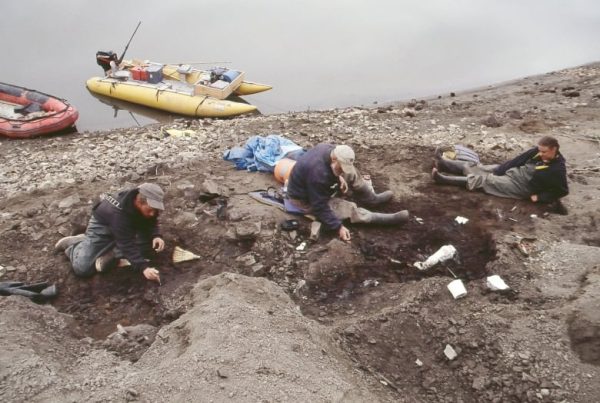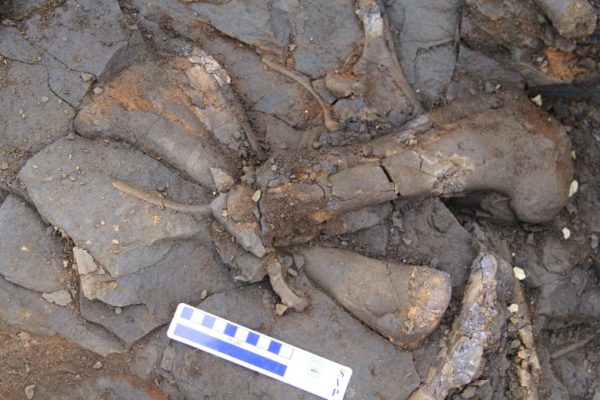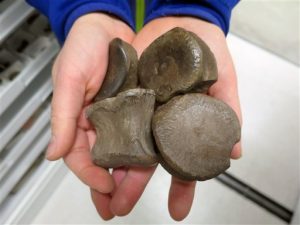Paleontologists have recently unearthed an exciting discovery in the Arctic region of Alaska the first-ever lambeosaur fossil found in the area. Dating back approximately 70 million years to the late Cretaceous Period, this crested, duck-billed dinosaur adds a fascinating piece to the prehistoric puzzle of the Arctic’s diverse ancient ecosystem.

The fossil was initially discovered in 2014 along the Colville River in Alaska’s North Slope, a location known for its abundance of dinosaur remains. While the region had primarily yielded fossils of flat-headed hadrosaurs like the Edmontosaurus, the unearthing of this unique lambeosaur specimen marked a significant departure from the norm.

Anthony Fiorillo, a key figure in the excavation, initially mistook the peculiar fossil for a predator-related piece due to its distinct features.
It was not until Ryuji Takasaki, a graduate student with extensive experience in studying Edmontosaurus bones, examined the fossil that its true identity as a lambeosaur became apparent. This discovery marked the debut of a definite lambeosaurine fossil in the Arctic, sparking excitement and interest among the scientific community.

The lambeosaur’s distinguishing feature, a bony crest atop its head, hints at potential communication abilities through sound amplification. This finding provides valuable insights into the behavioral patterns and interactions of these ancient creatures, shedding light on their existence in the Arctic landscape.

Furthermore, the discovery of the Alaskan lambeosaur offers a promising opportunity to bridge the gap between dinosaur taxonomy in North America and Asia. Scientists believe that further exploration and analysis of this fossil could unearth valuable information on the evolutionary connections between these regions through Beringia.

Anthony Fiorillo emphasizes the significance of this discovery, noting its implications for understanding Arctic biodiversity and prehistoric ecosystems. By studying and unraveling the mysteries of this ancient Arctic environment, researchers aim to gain valuable insights into the potential impacts of climate change on modern Arctic landscapes.

Looking ahead, Fiorillo expresses hope for future expeditions to uncover more fossilized lambeosaurs, further enriching our understanding of the prehistoric creatures that once roamed the Arctic terrain. This groundbreaking discovery not only confirms the existence of crested, duck-billed dinosaurs in the Arctic but also offers a glimpse into the interconnected history of these magnificent creatures across continents.

As the scientific community delves deeper into the mysteries of the ancient Arctic, each new discovery brings us closer to unraveling the secrets of a bygone era and understanding the fascinating world that existed millions of years ago.





